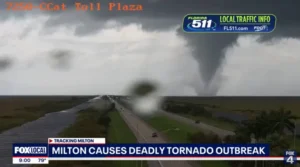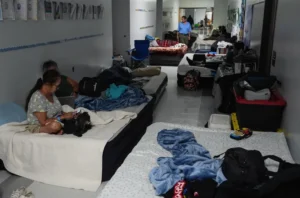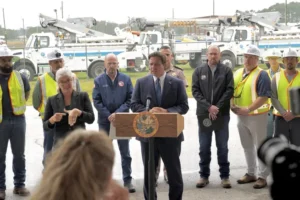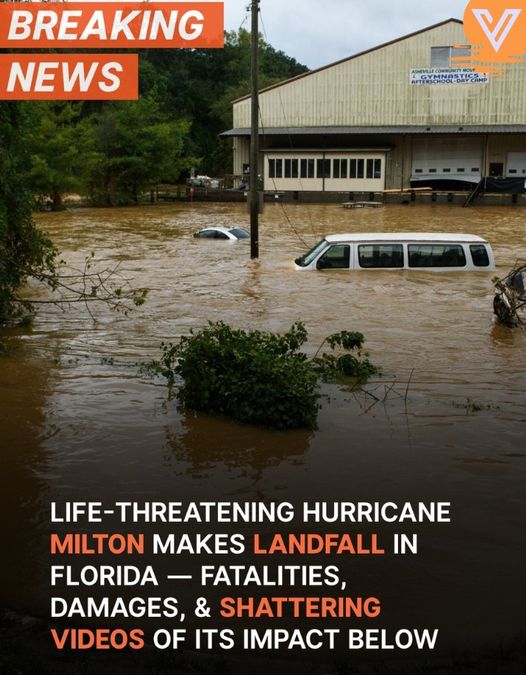Darkness fell as the storm hit Florida’s Gulf Coast, bringing deadly tornadoes and heavy flooding. Millions lost power, and many communities were left in ruins.

Hurricane Milton, a strong Category 3 storm, made landfall near Siesta Key in Sarasota County, Florida, on October 9, around 8:30 in the evening.
With winds over 120 miles per hour and heavy rain, the hurricane caused major damage. More than 1.1 million homes and businesses lost power, especially in Sarasota, Manatee, and Hardee counties.

The Florida Division of Emergency Management (FDEM) posted on Facebook, urging people to stay inside and remain alert.
As the hurricane approached, tornadoes tore through St. Lucie County, causing severe damage and deaths. Sheriff Keith Pearson confirmed “multiple fatalities” in a senior community near Fort Pierce.
The exact number of deaths is still unknown as rescue teams search for survivors. “They are listening for life,” Pearson said, describing efforts to find people in the wreckage.

St. Lucie County has suffered massive destruction. County spokesman Erick Gill said, “Dozens of homes have been damaged, some with catastrophic damage.”
Statewide, about 125 homes were destroyed, mostly in senior mobile home communities, according to FDEM Director Kevin Guthrie. Emergency workers are working nonstop to help those affected.
Governor Ron DeSantis said the storm caused 116 tornado warnings across the state, with 19 tornadoes confirmed. The damage from Hurricane Milton is widespread.

In St. Petersburg, a rare rainfall event occurred, with over nine inches of rain in just three hours. This was more rain than the city usually gets in three months.

An advisory on October 10 from the National Weather Service warned of flash floods in parts of west-central Florida. Strong winds also continued to hit the east coast.
By 1:00 a.m. Eastern Time, St. Petersburg had winds of 48 mph, with gusts up to 79 mph. Orlando recorded winds of 46 mph, with gusts of 74 mph, and Cape Canaveral had winds of 52 mph, with gusts up to 67 mph.
